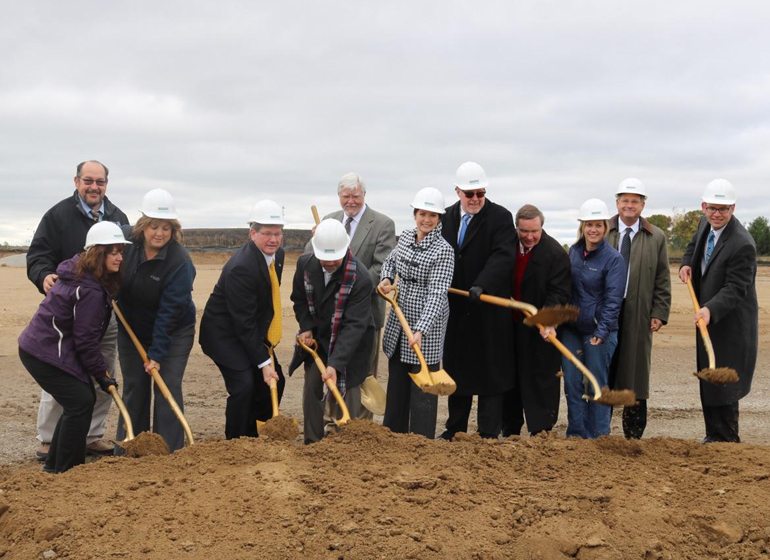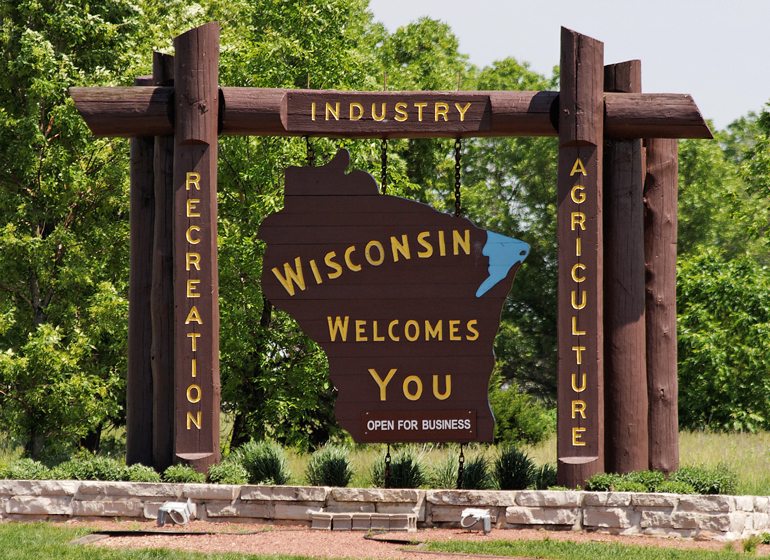Illinois-based Vonco Products LLC president Keith Smith was in search of a location to expand his company’s packaging manufacturing facility.
He met with developers in his home state, but every plan was too expensive for the Lake Villa-based company, until an innovative idea from the Kenosha Area Business Alliance (KABA) came across his desk. The nonprofit economic group proposed building a facility for Vonco Products in a new business park it was developing in western Kenosha County. Vonco signed a 10-year lease for the new building at a break-even price.

That kind of innovative thinking and vibrant public/private partnerships are just two of the many reasons companies look to grow their businesses in Wisconsin, said Tricia Braun, vice president of economic and community development for the Wisconsin Economic Development Corporation (WEDC).
“Wisconsin has a lot going for it, from our great location to a quality workforce, and businesses take notice of that,” she said.
Jim Paetsch, vice president of the Milwaukee 7 regional economic development group, worked on the Vonco project and said it was a unique deal.
“Very rarely do you have an economic group go this far – building a new park and building a facility to a company’s exact specifications,” he said. “I think what KABA did shows just what Wisconsin economic groups are willing to do to support companies.”
When it comes to attracting new businesses or helping current businesses expand in Wisconsin, economic development leaders point to four factors: a high-quality workforce, collaborative partnerships, location and strong financial incentives.
Workforce
As baby boomers age, the competition for quality workers will only intensify as companies look to fill key vacancies, Braun said.
“Wisconsin has long been known for the quality of its workforce,” she said. “I’m not sure if it’s our strong manufacturing history or the German heritage, but companies that have plants in Wisconsin and elsewhere always remark on the strong Wisconsin work ethic.”
Paetsch said state residents are well prepared for working in manufacturing.

“We have a plentiful workforce, from engineers to people on the shop floor who understand the industry,” he said.
Part of that understanding comes from productive collaborations between businesses and educational institutions, Braun said. She pointed out how the state’s technical colleges and K-12 school systems work with their local businesses to learn what skills are needed and to provide offerings to fit those needs.
Wisconsin also ranks third in the nation in percentage of residents who graduate high school, making them better educated overall when compared to workers in other states, Braun said.
Collaboration
While KABA’s agreement with Vonco is distinctly innovative, collaboration between public and private entities is commonplace across Wisconsin.
“Every deal we work on (at the WEDC) seems to have a public/private partnership component,” Braun said. “People are willing to work together towards a common goal of economic growth.”
Not only do businesses collaborate with technical colleges on general skills needed by workers, the ties can go deeper with specialized, company-specific training
Another example of public/private collaboration is seen at fabrication labs – also known as Fab labs – throughout the state, Braun said. First launched at MIT, Fab Labs feature off-the-shelf, industrial grade fabrication and electronics tools, which include open source software and programs written by researchers at MIT’s Center for Bits and Atoms. Across the nation, the labs are typically operated by schools and accessible to both academics and area companies.
In Wisconsin, Fab Labs need three things to exist: funds from the state, a school that houses the lab and support from local businesses, whether that means hands-on support or funding. At first found only in state colleges and universities, new Fab Labs are now popping up every year. In 2016, 25 high schools received funding through the state’s Fabrication Laboratories Grant Program for their own labs, to create a place where students can use their math, engineering and materials processing skills to make real products.
At the Fab Lab in Three Lakes – which opened in 2015 and was the first in Wisconsin to be housed outside of a technical college – students and members of the community can use 3-D modeling and 3-D printing technology to design and make products.
“We’re creating together as a team, and it is having a positive return” on Wisconsin’s economy, Braun said.
Location
In business, location is everything, and Wisconsin is ideally positioned for companies that do business nationally and globally. Vital transportation corridors, plus proximity to Chicago and Minneapolis appeal to businesses move products over long distances.
The interstate highways moving traffic around Wisconsin allow raw materials and manufactured goods to move easily, Paetsch said. Several retailers have large distribution centers here, including Walmart, Amazon and Dollar General.
Products and raw materials also move via three large Great Lakes ports in Superior, Green Bay and Milwaukee.
Railways also play a key role in moving raw materials through Wisconsin, such as transporting pig iron from the Port of Green Bay to Waupaca Foundry. The state also benefits from its close proximity to Chicago, a major rail hub.
Access to materials and services is another strength. “You can’t beat Wisconsin’s location for manufacturers,” said M7’s Paetsch. “There are a lot of industries here that are also part of key supply chains, which is something that matters to businesses. They don’t have to go too far to get what they need to make their products.”
Incentives
Wisconsin offers attractive incentives for businesses looking to expand or move to the state as well as for startups, Braun said. In the case of Vonco, the manufacturer will receive state tax credits totaling up to $500,000 from the WEDC and a forgivable $500,000 loan from Kenosha County to help with relocation costs.

The state’s list of tax credits and incentive programs is immense. When businesses come to the WEDC with their plans, the work begins to match up the company’s needs with what the state has to offer.
“We want to fully understand the scope of the project and look to local partners to see what’s possible,” Braun said.
For early-stage businesses and entrepreneurs, the Qualified New Business Venture Program (QNBV) has encouraged investment in startups, which has led to additional job creation, said Aaron Haeger, the WEDC’s vice president of entrepreneurship and innovation. Businesses developing innovative products or services can apply. Qualifying companies can offer angel investors, angel networks and qualified venture capital funds a tax credit equal to 25 percent of the total of the investment.
“We’ve heard from investors and companies that these credits are important to growing businesses,” Haeger said.
The Business Development Tax Credit program is another incentive companies can tap. It encourages businesses to add jobs, invest in capital improvement or provide employee training. The program also strives to retain corporate headquarters by providing refundable tax credits to reduce Wisconsin state income tax liability.
A newer initiative is geared towards manufacturers and farmers. The Wisconsin Manufacturing and Agriculture Tax Credit was 7.5 percent for the 2016 tax year, having risen in graduated stops to four times the 2013 level. Braun said the program is “a game changer for Wisconsin,” since it results in a lower tax rate that encourages companies to stay and grow here.
Haeger said Wisconsin takes a comprehensive approach to tax credits when it comes to helping businesses, whether it’s a startup or a more mature company. As evidence, he pointed to the latest Kauffman Index of Main Street Entrepreneurship, which ranked the Badger State second among the 25 largest states when it comes to small business activity. In addition, half of the state’s startups survive their crucial first five years.
“Startups live longer in Wisconsin, and I think you can trace that business health to the support we’ve given these companies,” Haeger said.
As for Vonco Products, the combination of financial incentives, location, access to a well-trained workforce and the public/private partnership for its new facility encouraged Smith to move across the state line. Paetsch and other economic development officials hope that combination will encourage other companies to do the same.
“We were impressed with what the WEDC and its partners put together, and we also want to thank KABA for the role they played in bringing the various parties together to complete the deal,” said Vonco’s Smith. “We’re very excited about what our new location means in terms of delivering solutions for our customers.”


